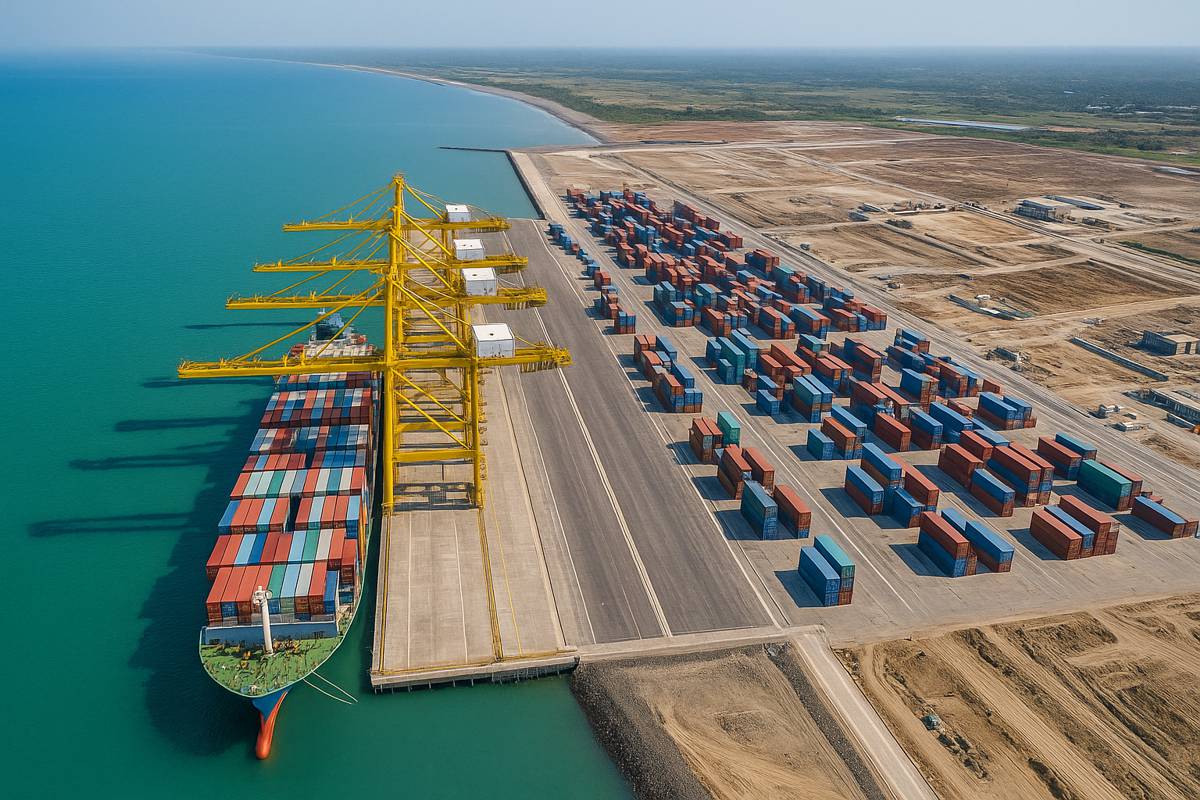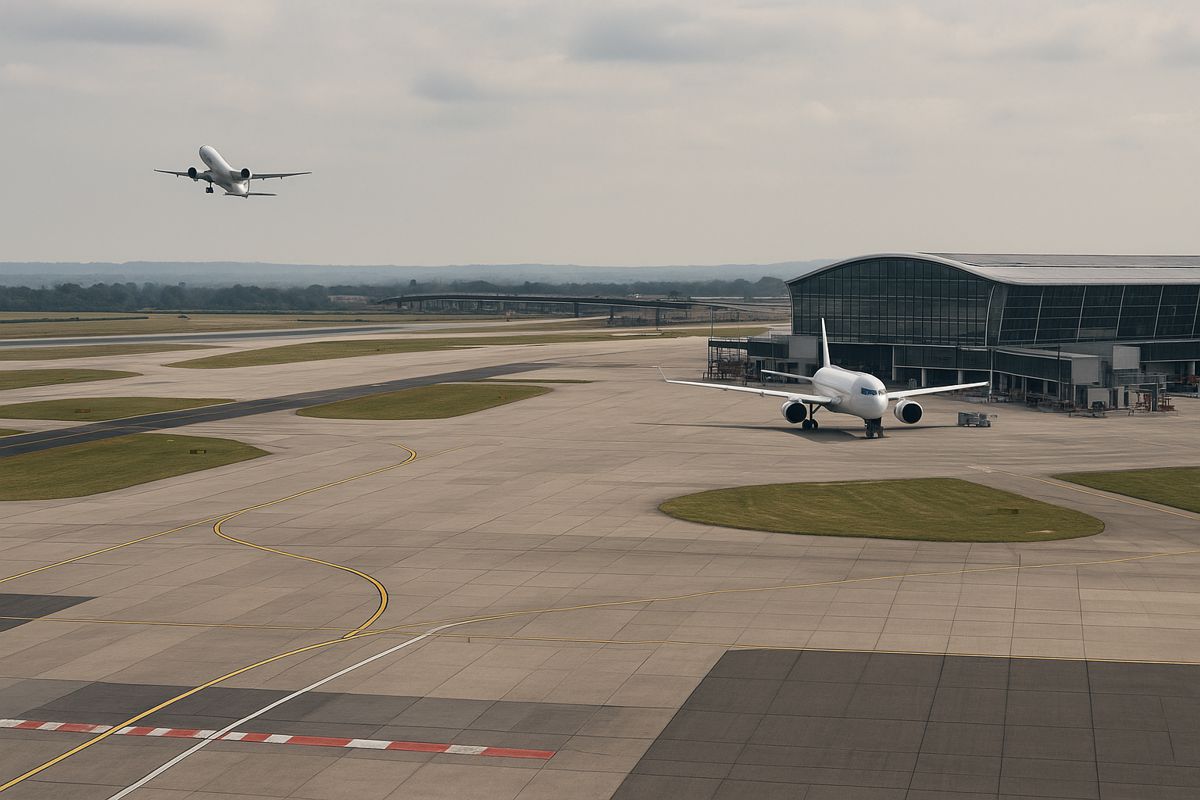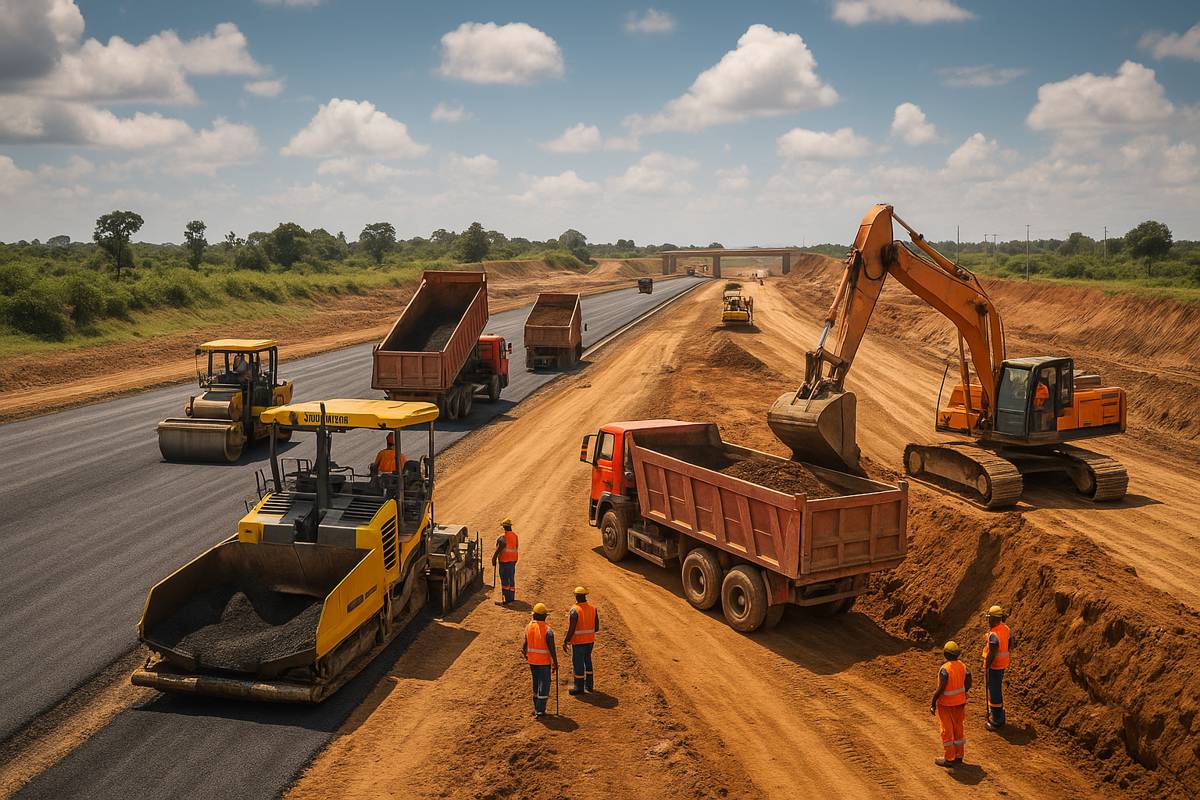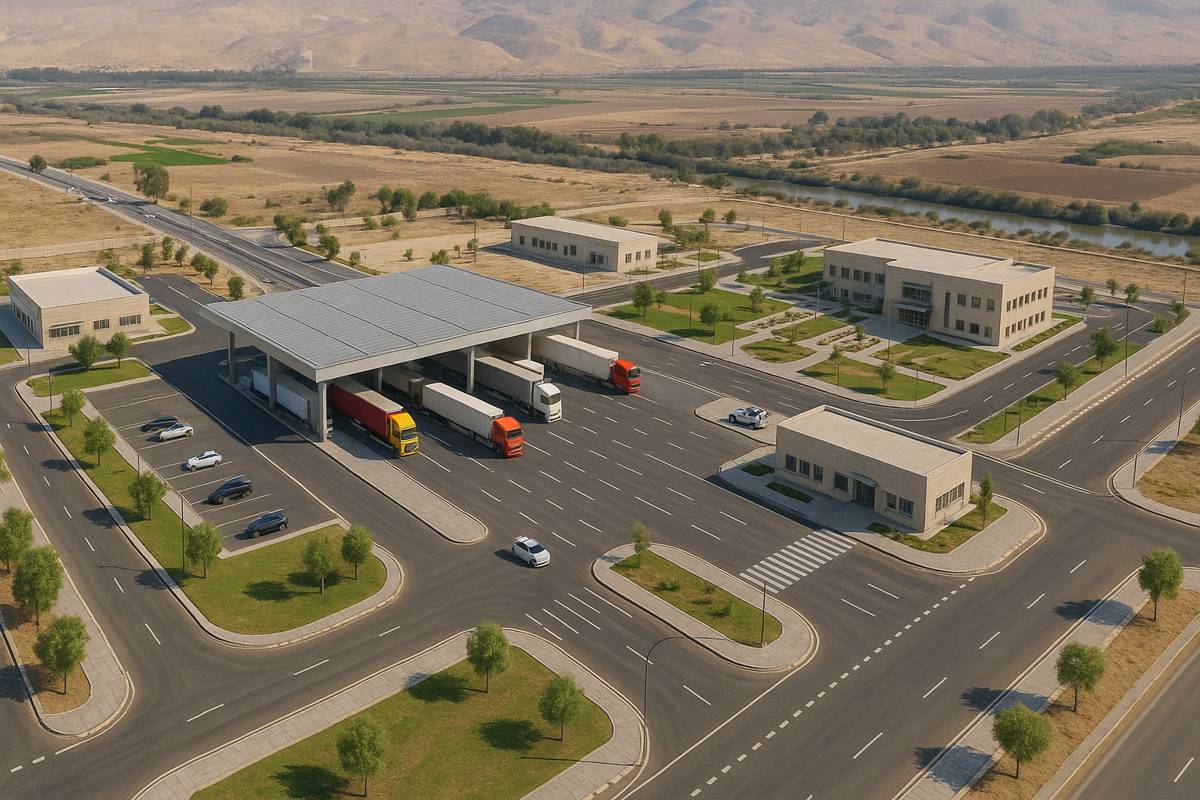Evolved WAN is Critical to Smart Road Future
Imagine if we could improve safety and remove all the irritants impacting drivers today using automation and artificial intelligence (AI). Wild animals, potholes, bad weather, traffic, and even red lights—all managed by early warnings and automated systems to accelerate and secure one’s drive.
All possible, but it’s going to require a renewed focus on the systems behind the road and highway infrastructure. With the emergence of Vehicle-to-Network-to-Everything (V2N2X), autonomous vehicles (AVs) and AI-assisted intelligent transportation systems (ITS) as the most powerful tools modernizing traffic and road management, attention must also turn to evolving the underlying wide area network (WAN)—or wide area communications network—enabling these technologies.
Indeed, a private, mission-critical Internet Protocol Multi-Protocol Label Switching (IP/MPLS) WAN is a key component of transformation. It enhances real-time awareness of road events while providing the capacity to support the massive data and evolving connectivity demands consistent with today’s physical and digital road infrastructure. Such a dedicated multi-service network can leverage owned fibres, microwave transmission, leased Ethernet services, private wireless or mobile virtual private network (VPN) services, all front-ended by a seamless IP/MPLS layer acting as a platform of integration for all applications.

Driving Technologies
Let’s look first at the technologies that are driving enhancements, and what benefits they provide for the transportation environment.
- V2N2X: Think cloud-based services provided by automobile manufacturers, navigation service providers or road infrastructure owner/operators that leverage cellular networks to connect vehicles to outside entities and other vehicles. Benefits lie in delivering real-time awareness of the broader traffic environment—hazards, school buses, wrong-way drivers, broken-down vehicles—to speed and optimize traffic flow.
- Avs: State-of-the-art technologies are behind driver-free transportation. These AVs can leverage V2N2X technology, particularly through 5G networks, to achieve high-speed, low-latency broadband connectivity with other entities. They also deploy an array of sensors, including LiDAR, cameras, radar and GPS to perceive their surroundings and navigate in complex, fluid environments.
- AI-assisted C-ITS: Road operators manage traffic and situational changes using data collected from sensors and intelligent roadside equipment by Cooperative ITS (C-ITS) systems. Sudden inclement weather, road accidents and congestion can be streamlined with responses like variable speed limits, route diversion plans and signal timing adjustments. With growth in roadside sensor datasets, C-ITS vendors are increasingly embracing AI and machine learning (ML) for instantaneous data analysis.

Evolving the WAN
While this trio of technologies is enabling software-centric and data-driven operations, the distributed nature of the operations and physical infrastructure, proliferation in sensor devices and computationally intensive nature of AI applications all take a toll. Plus, highway systems are high-value targets for malicious cyber actors, making security a dominant concern.
So, what is needed for the WAN to keep pace with the connectivity demands of a modern highway infrastructure and counter more complex cyber threats? Let’s take a deeper look at four recommendations.
#1 Segment Routing for Scale and Simplicity
- Why: Proliferation in intelligent roadside equipment such as sensors, wireless access points and base stations is increasing network size and span, requiring adaptations in networking technology.
- How: Extending the IP/MPLS network with segment routing (SR) can increase service scale and add network capabilities, providing important simplification for network operation teams.
SR uses existing routing protocols like Open Shortest Path First (OSPF) and Intermediate System to Intermediate System (IS-IS) and adds SR extensions to distribute labels known as segment IDs (SIDs). Simplifying label management and distribution is the key to adding massive scale.
Also, IP/MPLS networks can seamlessly migrate to SR over MPLS without impacting the existing network hardware and routing design. This migration simplifies path establishment and network scaling, which, in turn, can boost data traffic control.
To know and optimize traffic in the telecom network, combine SR with a Path Computation Engine function—the GPS of IP infrastructure—in the transport network manager. Enhanced load sharing with high data flow granularity will allow fine-grained control over packet forwarding paths. IP/MPLS also supports end-to-end traffic engineering paths that span multiple routing areas, which is a common design practice in large-scale networks.
If the challenge is roadside devices with higher physical network port fanout, operators can also consider aggregating the industrial Ethernet network layer as an integrated part of the WAN to maintain robust redundancy and security while supporting end-to-end network service.
#2 OT Cloud Networking for Storage and Compute
- Why: Road operators are segregating their smart highway applications within the on-premises data center (DC) in an operational technology (OT) cloud to enhance efficiency and support AI/ML. As that content interacts with roadside assets and sensors, the data center is now part of the mission-critical infrastructure—with commensurate connectivity needs.
- How: OT cloud networking extends mission-critical connections from the private IP/MPLS transport network into the data center network. Leaf switches within the DC fabric connect to servers and spine switches serve as the aggregation layer. The DC gateway provides interworking between the fabric and the IP/MPLS WAN.
Harnessing Ethernet Virtual Private Network (EVPN) services and Border Gateway Protocol (BGP) routing through the gateway, the transport and DC network domains can seamlessly interwork with the fabric at the service and IP layers.
This newfound agility supports dynamic OT cloud networking, connecting the access network to the core domains and giving rise to smart highway applications, including:
- Incident detection with a continuous closed-circuit television (CCTV) video stream to the video gateway inside the roadside cloud facility.
- Incident follow-up alerts via video gateway to the ITS within the data centre.
- Dynamic signage programming through the ITS signal control subsystem that alerts drivers to accidents ahead and speed limit changes.
- ITS notification of the Supervisory Control and Data Acquisition (SCADA) system in the event of a tunnel accident. The SCADA server then commands the SCADA remote terminal unit to activate tunnel emergency systems, such as ventilation.
#3 Networking for AI Workloads
- Why: AI can advance road operations, but the computationally intensive actions to train and build inference models require an extensive network infrastructure that connects the OT cloud to the roadside edge cloud and to sensors across the road system.
- How: What’s needed to make the network most efficient for AI workloads?
- Utmost resiliency: Rich path diversity and advanced redundancy protection capabilities ranging from MPLS fast reroute to equal-cost multipath ensure delivery of video streams to video analytics applications in the edge cloud for inferencing.
- High network capacity: As AI training can last days and weeks, minimizing job completion time (JCT) is crucial. High-speed interfaces ranging from 100GE to 800GE will increase capacity between compute centers.
- Congestion-free, lossless networking: Congestion is the enemy of AI workload performance. With a network services platform, operators can intelligently facilitate connections across the network based on service intent, including bandwidth and class of service. Network analytics and QoS capabilities such as intelligent packet discard and buffer management become critical to prioritizing AI. In the data center, where congestion can impede GPU transmissions, advanced congestion control and notification mechanisms can manage and prioritize traffic.
- Low overall and tail latency: When switching data among GPUs, high-speed interfaces accelerate transmission of Ethernet frames, minimizing latency in the back-end network and lowering JCT. High latency experienced by one GPU can delay others, impeding the AI training stage. Therefore, a robust, high-throughput and low-tail latency network infrastructure is key to real-time data delivery. Additionally, guaranteeing bandwidth and eliminating over-subscription with a non-blocking topology is essential.
- Seamless WAN/AI infrastructure integration: A data centre gateway will bridge the cloud network and WAN at the transport, IP and service layers, providing seamless end-to-end connectivity for AI workloads from the central OT cloud to the entire highway infrastructure.
#4 Zero Trust and Quantum-Safe Encryption Secure Data
- Why: The highway infrastructure attack surface expands with digitalization, making protection of the confidentiality, integrity and availability of application data paramount. The need grows with the advent of cryptographically relevant quantum computers (CRQCs), which cybercriminals can exploit to break the protection provided by asymmetric key encryption schemes such as Diffie-Hellman.
- How: Today, road operators can turn the WAN into the first line of cyber defence with security tools such as network access control, network segmentation through IP/MPLS services, IP and Media Access Control (MAC) filtering, and role-based network management.
Further strength will come with quantum-safe encryption, which can protect against targeted man in the middle (MITM) and denial of service (DoS) attacks on critical services such as the ITS.
By deploying a multilayer defence-in-depth approach that uses Layer 1 OTNsec and Layer 2 MACsec with symmetric Advanced Encryption Standard (AES-256) encryption, road operators can thwart quantum attacks by ensuring security across the infrastructure, from data centres and operation centres to roadside equipment.

The Road Ahead
Road operators are on the cusp of major technological advancement, working to transform the driving experience with pivotal new technologies like V2N2X, AVs and AI-assisted C-ITS.
Now is the time to consider an evolution of the WAN as well as private on-premises data centers, ensuring they have the resiliency, capacity and security to fully realize the smart roads promise. Consider gearing up with Segment Routing, OT cloud networking, Networking for AI workloads, and zero-trust WAN security to optimize the road ahead.
Article by Benoît Leridon, Transportation Segment Leader Network Infrastructure, Nokia. He is responsible for global business development targeting transportation verticals. Benoit has 25 years of telecom pre-sales background covering enterprise and carrier markets for data, and voice solutions, and joined Alcatel-Lucent in 2010 after holding different pre-sales management positions in companies such as Wellfleet, Bay Networks and Nortel.




















